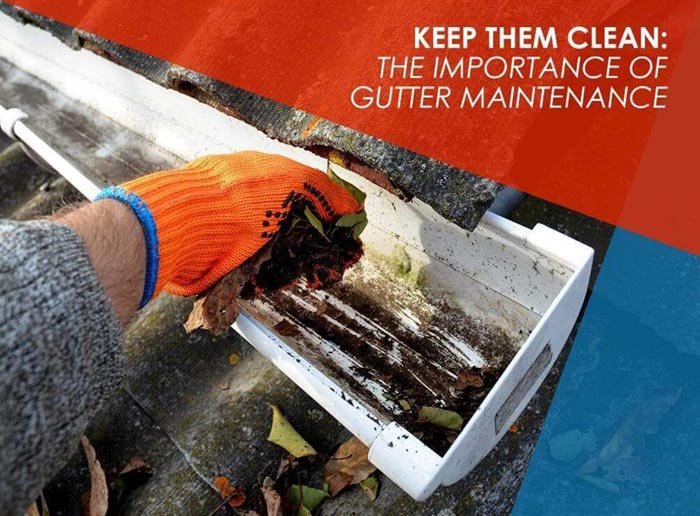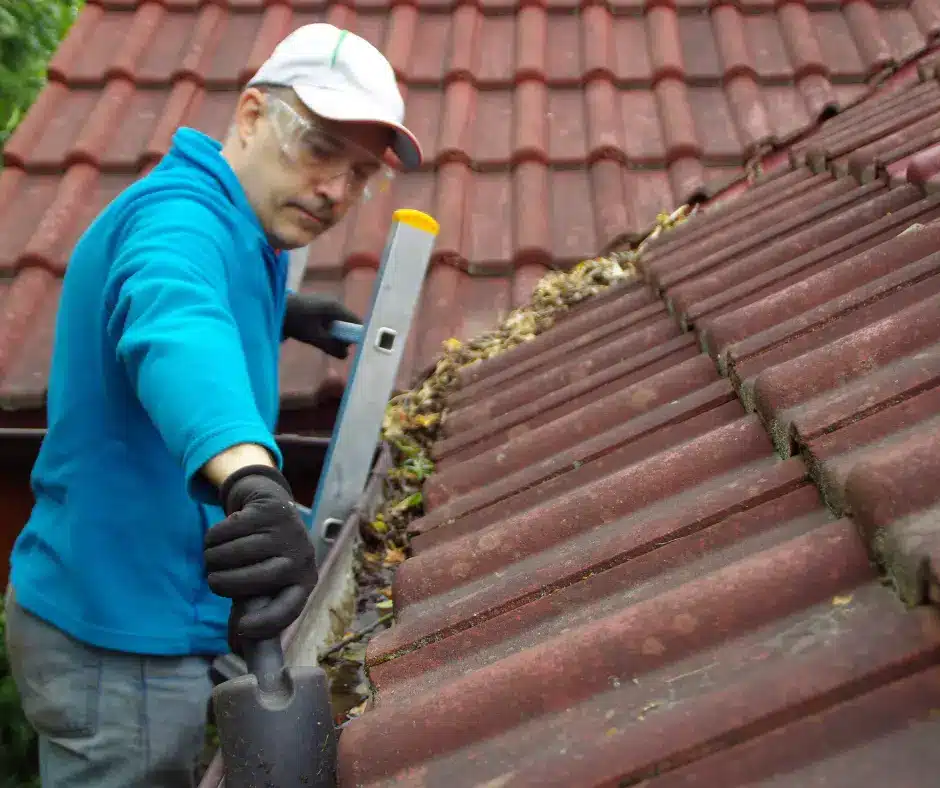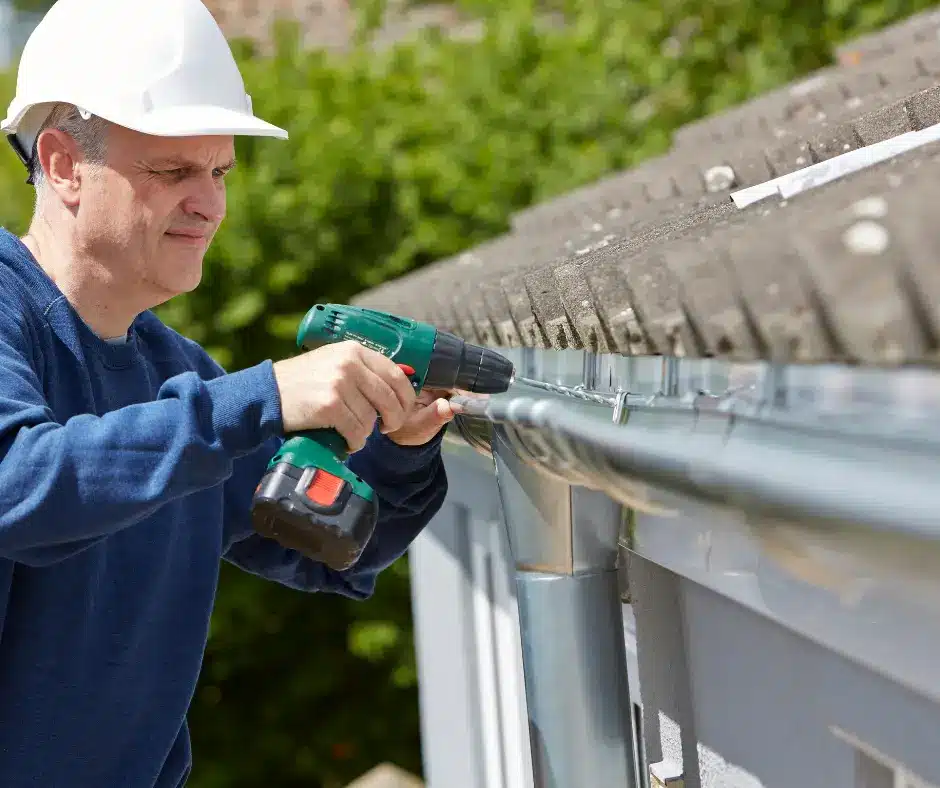The Importance of Gutter Maintenance

Good gutter maintenance may not be the most exciting topic of conversation, but it is still really important. There is no single answer that is correct for every home, but make sure you clean your gutters ASAP if you notice any overflowing, leaking, or water in your house that shouldn’t be there. Gutter blockages are primarily due to fallen leaves from nearby trees.
So the frequency that you need to clean your gutters will depend on the size, type, and a number of trees on your property. Even if there are no large trees near your house, leaves can still travel distances when it’s windy. You still need to clean your gutters at least once per year at an absolute minimum; this will help to extend the life of your gutters.
Even a small amount of leaf debris or dirt can cause water to pool in your gutters which will reduce their lifespan.
We all recognize the importance of having a ‘roof over our heads’ and yet we often neglect our roof and gutters until it is too late. Inspecting and maintaining your roof, gutters, and downpipes should be carried out at least every six months. We recommend it at the end of autumn and spring. In addition, check your roof, gutters, and downpipes during and after storms. Deterioration to roofs and gutters can suddenly be accelerated by storms and high winds.
Overflowing gutters indicate that there is a serious problem with your water management system. Gutters that have a build-up of debris with leaf matter, dirt, and organic growth will lose a large amount of their water-carrying capacity causing them to overflow.
Overflowing gutters can lead to flooded ceilings, damaged roof timbers, a saturation of the internal walls, and damage to the foundations of the building, which can result in some serious structural damage.
Valley lines are also prone to trapping leaves, causing water to divert and overflow onto the ceilings below. Often this results in not only the ceiling and some of your possessions below, but also insulation, light fittings, and electrical wiring.

INSPECTING YOUR ROOF
Where possible carry out visual inspection of the roof from ground level (binoculars are useful). This may be sufficient if there is no evidence of problems from inside the building or the roof space. Inspect the roof for any loose metal sheeting, and clogged, bent, or broken gutters and downpipes. Check for damaged or lifting cappings and flashings, paying particular attention to chimneys, parapet walls, pipe penetrations, air-conditioners, and skylights. Look for signs of corrosion at the joins between the sheets and also along the screw line.
Not all roof problems can be rectified without the services of a roofing professional, however, gutter maintenance, when approached sensibly can be fixed within a few hours. Safety should be the primary concern when deciding whether to do this yourself or engage someone else.
SAFETY FIRST
Many problems can only be identified by getting up on the roof and any work you do around your premises with a ladder requires care. Use a sturdy, standalone ladder placed on a level surface. Carry out an inspection as outlined above. In addition, check the gutters and downpipes for a build-up of debris and leaf matter. Wear thick gloves and protective eyewear to avoid cuts to your hands and swarf entering your eyes.
MAINTENANCE PROCEDURE
Using a safe and stable ladder, wearing appropriate thick PVC gloves and protective eyewear, clean and remove the build-up of leaf matter, dirt, and debris from the gutters. Use a stiff, soft-bristled brush to sweep debris into a pile, being particularly careful not to scratch or damage the metal gutters. Place the debris into a bucket or plastic bag and lower it to the ground.
With a garden hose wash down and remove all sludge and decaying leaf matter. Check that the gutters are draining freely towards the downpipes or outlets and that they do not hold any water as this will accelerate the rusting of the steel or iron gutters and considerably shorten their life.
Downpipes should be cleared of any debris by inserting a water pressure hose down (from the top) each downpipe. Clearing of obstructions should immediately remove the risk of water backing up in the gutters. Underground stormwater systems may require a plumber to unblock any obstructions.

If your gutters and downpipes have been cleared and cleaned and there are signs of leaks then it is likely that your gutters and downpipes require replacement. Our representatives can help identify the problem. Call All Weather Exteriors for more information or an obligation-free quote at (204) 510-2959.
Leave a Reply
You must be logged in to post a comment.

One Comment